MercoPress. South Atlantic News Agency
UK and Germany side by side at the centenary of the biggest naval engagement of WW One
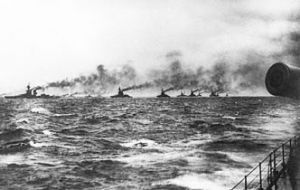 The battle was fought near the coast of Denmark on 31 May and 1 June 1916 and involved about 250 ships.
The battle was fought near the coast of Denmark on 31 May and 1 June 1916 and involved about 250 ships. 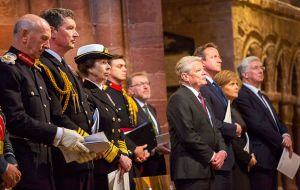 Prime Minister David Cameron, German President Joachim Gauck and Scotland's First MInister Nicola Sturgeon attended the Kirkwall service
Prime Minister David Cameron, German President Joachim Gauck and Scotland's First MInister Nicola Sturgeon attended the Kirkwall service 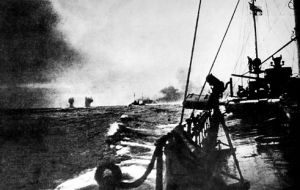 The Battle of Jutland was the only major sea battle of World War One. It was a battle that Britain, with its long naval tradition, was widely expected to win.
The Battle of Jutland was the only major sea battle of World War One. It was a battle that Britain, with its long naval tradition, was widely expected to win. 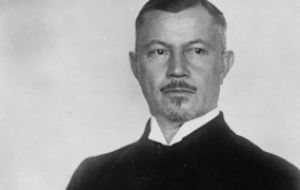 Germany's fleet, under Vice-Admiral Reinhard Scheer, was aware of the Royal Navy Grand Fleet's superiority in terms of numbers
Germany's fleet, under Vice-Admiral Reinhard Scheer, was aware of the Royal Navy Grand Fleet's superiority in terms of numbers 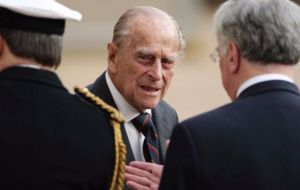 Duke of Edinburgh said that whatever the judgment on the outcome of Jutland, the commemorations were focused on the “endurance and gallantry” of all sailors
Duke of Edinburgh said that whatever the judgment on the outcome of Jutland, the commemorations were focused on the “endurance and gallantry” of all sailors The centenary of the biggest naval engagement of World War One was marked by commemorative events on Tuesday, 31 May. A service at St Magnus Cathedral in Orkney paid tribute to the 8,648 sailors who died during the Battle of Jutland and a service of remembrance also took place on board HMS Duncan at Jutland Bank, the site of the battle.
The battle was fought near the coast of Denmark on 31 May and 1 June 1916 and involved about 250 ships. It saw the Royal Navy's Grand Fleet, based at Scapa Flow in Orkney, clash with the German High Seas Fleet.
Prime Minister David Cameron, German President Joachim Gauck and Scotland's First MInister Nicola Sturgeon attended the Kirkwall service, along with the Princess Royal and her husband Vice Admiral Sir Tim Laurence, representing the Commonwealth War Graves Commission.
Events continued with a service at Lyness Cemetery on the island of Hoy - the final resting place for more than 450 service personnel who died in the war, including sailors killed at Jutland.
On the street outside the UK's most northerly cathedral, islanders young and old crowded the pavements as the Royal Marines band led a naval contingent, bayonets gleaming to the morning commemoration.
It was a powerful reminder of Orkney's naval history; Britain's Grand Fleet sailed to Jutland from the deep anchorage at Scapa Flow. Nearly 6,000 men never returned.
The services at Kirkwall and Lyness mark the loss of 25 ships, British and German, in a clash which resulted in no clear victory.
A century ago an islander called Margaret Tait captured the mood after the battle. “What a gloom was cast over the town, and how depressed we were to think of our noble ships, brave sailors and officers.”
Later, family members and representatives of today's navies will re-tell the stories of Jutland, and remember those who still lie beneath the dark waters of the North Sea.
Representatives of all the other nations connected to the battle - Australia, Canada, Ireland, Japan, Malta, New Zealand and South Africa - were at the cathedral.
The commemoration was led by the minister of the cathedral, Fraser MacNaughton. He was joined by the Royal Navy's chaplain of the fleet, the Venerable Ian Wheatley, and a German naval chaplain.
In the North Sea, The German ship FGS Schleswig-Holstein joined HMS Duncan at Jutland Bank.
The Battle of Jutland was the only major sea battle of World War One. It was a battle that Britain, with its long naval tradition, was widely expected to win.
Germany's fleet, under the command of Vice-Admiral Reinhard Scheer, was aware of the Royal Navy Grand Fleet's superiority in terms of numbers, and wanted to lure Britain's battle cruisers into a trap.
The German admiral's strategy was to draw portions of the British fleet into battle with a strike at Allied shipping off the Norwegian coast.
However, British admiralty intelligence intercepted a German radio message saying the High Seas Fleet was preparing to leave port and the commander of the British fleet, Admiral Sir John Jellicoe, sailed from Scapa Flow in Orkney to intercept it.
There were a series of clashes throughout 31 May, including the loss of HMS Indefatigable which was hit by German shellfire and exploded in a ball of flame. From a crew of 1,019 men, only two survived. HMS Queen Mary was also sunk, with the loss of 1,266 crew.
The main battle began at about 18:30 on 31 May when Vice-Admiral Scheer realised he was up against the entire British Grand Fleet.
At the end of the engagement, the British had lost more in terms of ships and men, but it later emerged the Germans had concealed the scuttling of two of their ships, and it soon became seen as a strategic victory for the Royal Navy.
In a message on the St Magnus order of service, the Duke of Edinburgh said that, whatever the judgment on the outcome, the commemorations were focused on the “endurance and gallantry” of all those who took part.
Tuesday was a bleak, windy afternoon but you could still see the Royal Navy's HMS Kent and the German Navy's Schleswig-Holstein in the water through the fog.
The Princess Royal, David Cameron, Nicola Sturgeon were among the six dignitaries who laid wreaths at the Cross of Sacrifice to represent the British and German lives lost.
The granite cross was built 10 years after Jutland to pay tribute to the Royal Navy's work. Inscribed on it are the words “Their name lived for evermore”. The graves of those buried at Lyness overlook the waters where many of the sailors served.
Many of the bodies recovered from the battle were never identified and their graves bear the inscription “Known Unto God”. There are graves here from both British and German sailors - “former enemies now united and at peace”, said Vice Admiral Sir Tim Laurence of the Commonwealth War Graves Commission.




Top Comments
Disclaimer & comment rulesCommenting for this story is now closed.
If you have a Facebook account, become a fan and comment on our Facebook Page!